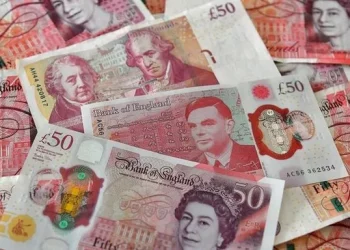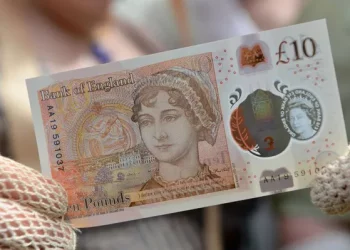Concept: Foreign exchange is mainly divided into static and dynamic.
This is mainly the same as the definition itself: the measure of value and means of payment.
The same goes for foreign exchange.
Dynamic: Foreign exchange refers to a specialized business activity in which one country is converted into another’s currency to pay off international debts and bond relationships.
Static: Foreign exchange refers to the foreign currency that can be used for payment or means of payment expressed in foreign currency.
For example: bank deposits, commercial drafts, bank checks, foreign government bonds, foreign banknotes, etc.
Thus, dynamic foreign exchange refers to a type of foreign exchange behavior that has occurred or is occurring, while static foreign exchange refers to a payment method that can be settled and can occur but has not yet occurred.
What are the specific foreign exchange: China promulgated the “” in 2008, which explains the foreign exchange: a.
Foreign currency, including paper money and coinage b. Currency payment certificates or payment instruments, including bills, bank payment certificates and bank cards c.
Foreign currency marketable securities, including government bonds, corporate bonds, and stocks D.E. Other Foreign currency assets Foreign Exchange classification: Foreign exchange classification can be divided according to whether it is freely convertible, different sources and purposes, and delivery periods.
1. Free convertibility: According to the degree of foreign exchange restrictions, it can be divided into free exchange foreign exchange, limited free exchange foreign exchange and bookkeeping foreign exchange.
A. Freely convertible foreign exchange: foreign exchange that is freely convertible into currencies of other countries or used for payment by third countries without the approval of foreign exchange authorities.
Such as,,, and other currencies, and these currencies represent checks, bills of exchange, stocks, bonds, and so on.
B. Limited freely convertible foreign exchange: foreign exchange that cannot be freely converted into other currencies or paid to third countries without the approval of the country issuing the currency.
The Fund stipulates that all currencies with certain restrictions on international recurrent payments and capital transfers are limited convertible currencies.
Most of the more than half of the world’s currencies are limited and freely convertible, including.
C. Functional currency: foreign exchange that cannot be freely converted into the currency of another country or paid to a third country without the approval of the country issuing the currency.
By agreement, the functional currency can only be used between the two countries.
According to the agreement, the pricing and settlement currency of the two countries can be the currency of the two countries or the currency of a third country.
2. Division by Sources and Uses Foreign exchange can be divided into trade foreign exchange, non-trade foreign exchange and financial foreign exchange according to different sources and uses of foreign exchange.
A. Trade foreign exchange: refers to the foreign exchange received and paid in import and export trade, including goods and related ancillary expenses (such as freight, insurance, publicity fees, marketing fees, etc.).
The main content of international economic exchanges is international trade, and trade foreign exchange is the main source and use of a country’s foreign exchange.
B. Non-trade foreign exchange refers to foreign exchange received and paid by other parties except import and export trade and capital import and export (such as foreign exchange for labor services, overseas Chinese remittances, foreign exchange for donations, foreign exchange for aid, etc.).
C. Financial foreign exchange, different from trade foreign exchange and non-trade foreign exchange, refers to the foreign exchange of financial assets.
For example, foreign exchange traded between banks is neither derived from nor used in tangible trade, but is used to manage and manipulate various currency positions of financial assets.
3. According to market trends Foreign exchange can be classified into hard foreign exchange and soft foreign exchange according to different market trends.
A strong currency is a freely convertible currency with a strong value and an upward trend in exchange rate.
A weak currency is a freely convertible currency that tends to decline.
1. Reasons: There are many reasons for foreign exchange trading.
The most fundamental reason is the demand and supply of non-domestic currency by the government, business enterprises, financial institutions and individuals.
About $30 billion in goods and services are traded every day in the world.
When the external debt and claims arising from these transactions in goods and services are paid off, non-domestic currencies are needed.
B. International Investment and Financing With the deepening of globalization and international division of labor, in addition to goods and services, the international mobility of production factors such as capital is also becoming more and more frequent.
The basic purpose of such capital flows is to pursue higher profits and interest than at home, and to invest and finance directly or indirectly in other countries.
Regardless of the form of investment and financing, the currency of one country must be exchanged for the currency of another country, either the currency of one country for the currency of the investing country or the currency of a third country for the currency of a third country.
[C] Foreign exchange preservation and speculation are inevitably encountered in the process of trade, investment and financing.
Foreign exchange risk refers to the possibility of loss or gain due to exchange rate changes in the economic activities of holding or using foreign exchange.
The conversion of a given amount of foreign currency into cost currency or other foreign currency may be less or more, creating uncertainty for holders and users of foreign currency.
To avoid such uncertainty is to store value, and to chase such uncertainty is to speculate.
D. For other participating central banks, foreign exchange transactions are only for the purpose of intervening in the foreign exchange market to realize the value of the local currency, maintain the stability of the foreign exchange market and promote their own economic development.
Types: Types of foreign exchange trading mainly include,,, trading,, trading, foreign exchange futures trading,.
In addition to this there are the familiar deals and.
A. Spot foreign exchange transaction Spot foreign exchange transaction, also known as a transaction, refers to the exchange of two different currencies at the agreed exchange rate between the buyer and the seller, and delivery within two working days after the transaction.
The reason for the two working days is that global foreign exchange markets operate 24 hours a week, so the barriers to delivery caused by time differences between markets can be removed.
B. Forward foreign exchange transaction Forward foreign exchange transaction, also known as forward exchange transaction, refers to the foreign exchange transaction that is not delivered immediately after the foreign exchange transaction, but is delivered according to the provisions of the contract at the agreed exchange rate on the agreed date.
The most common forward foreign exchange transaction delivery period is generally 1 month, 2 months, 3 months, 6 months, up to 12 months, if the term is longer, it is called super forward transaction.
C. Transaction Foreign exchange swap transaction, also known as transaction, refers to the purchase or sale of a currency, sell or sell the same currency, mainly includes forward to forward, spot to spot, spot to forward.
D. Foreign Exchange option A foreign exchange option is a currency transaction contract that gives the buyer (or holder) of the option the right to buy or sell a specified amount of currency at a predetermined price on or before a specified date.
E. Foreign Exchange futures Foreign exchange futures are a form of trading in which two parties enter into a contract to buy or sell an asset at an agreed price at a fixed future time.
Most foreign exchange futures are traded not for actual delivery of future currencies, but for hedging against exchange rate movements similar to that offered by forward exchange exchanges.
F. Foreign Exchange Firm Trading in China, customers exchange their freely convertible foreign exchange (or foreign currency) into another freely convertible foreign exchange (or foreign currency) through domestic commercial banks. This is called foreign exchange firm trading.
A so-called firm offer means there is no leverage in the deal.
G. foreign exchange margin trading in our country, foreign exchange margin trading is to point to sign a contract with dealers, a trust and investment account to deposit money (deposit) as collateral, by brokers set operating leverage limits, investors can buy and sell the same value in the line spot exchange, the profit and loss caused by the operation, automatic deduction or deposit in the investment account.
Investors still focus on Omicron, two factors may guide the market theme.
Please pay attention to the specific operation, the market is changing rapidly, investment needs to be cautious, the operation strategy is for reference only.

























